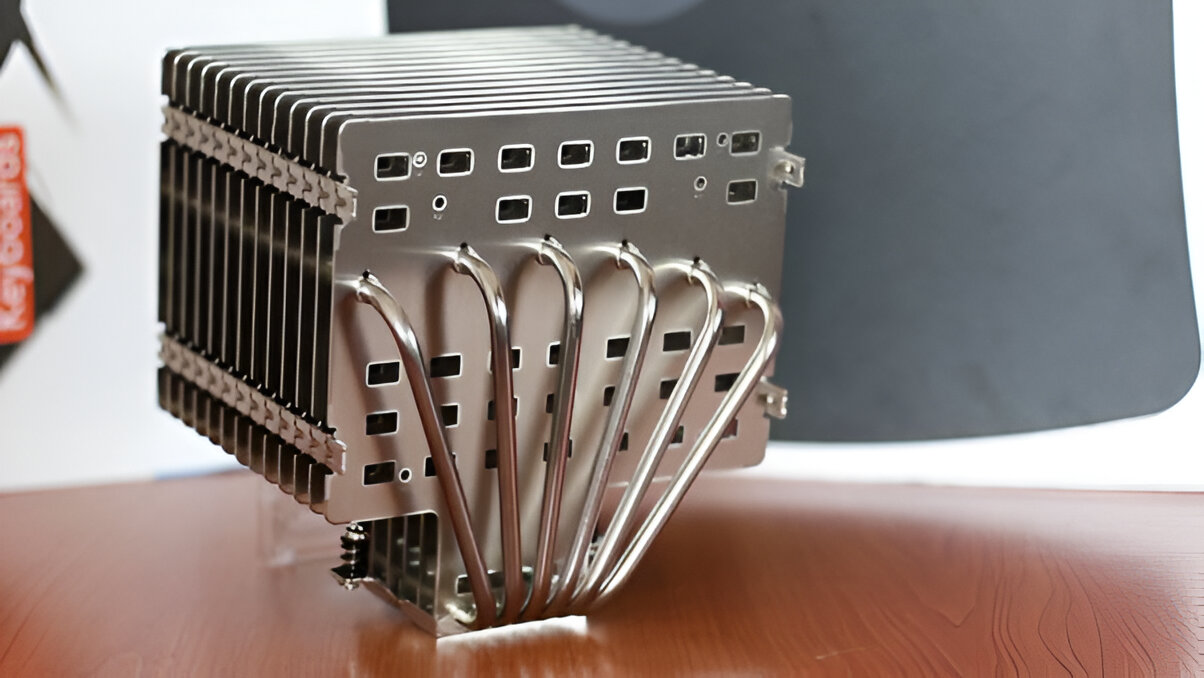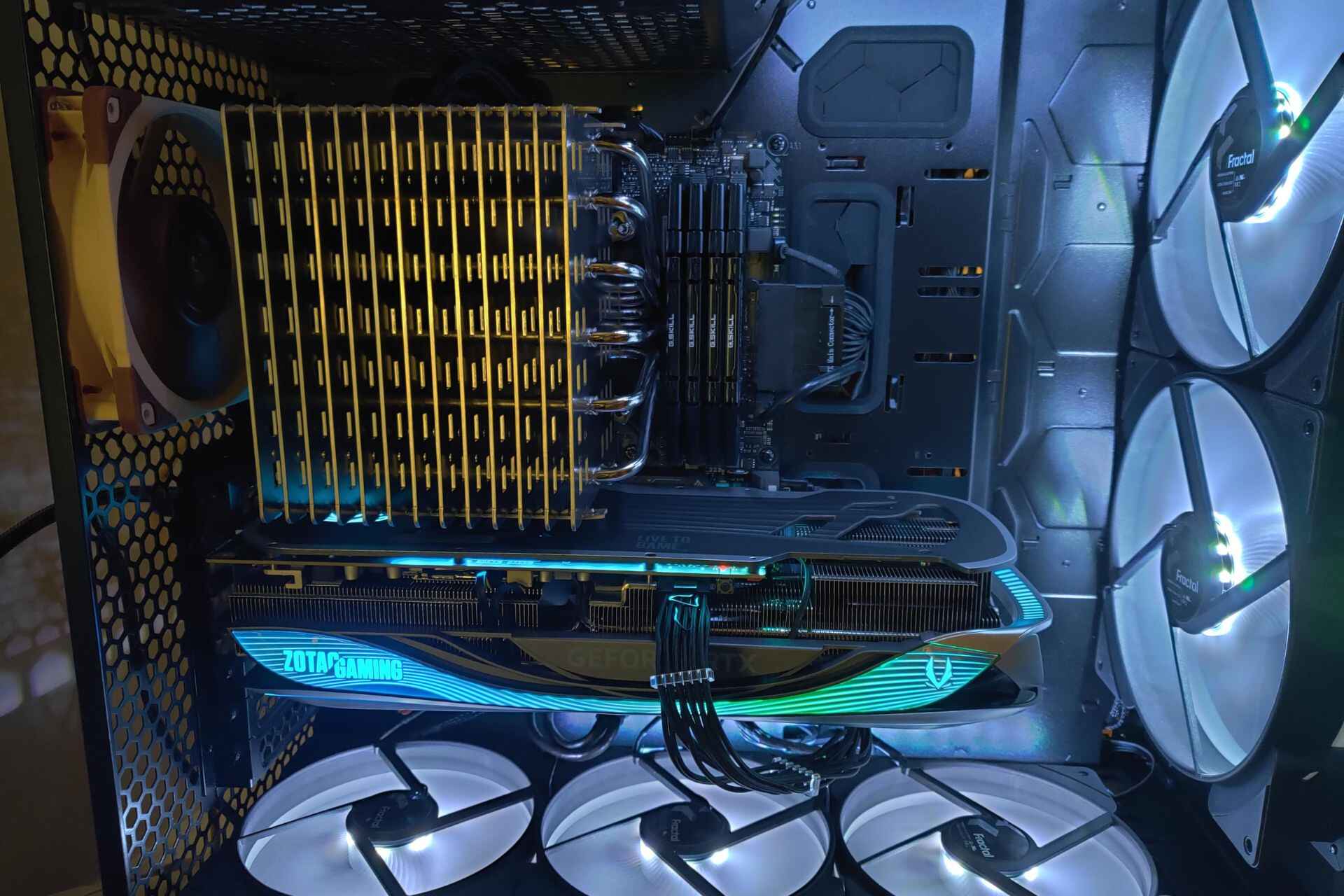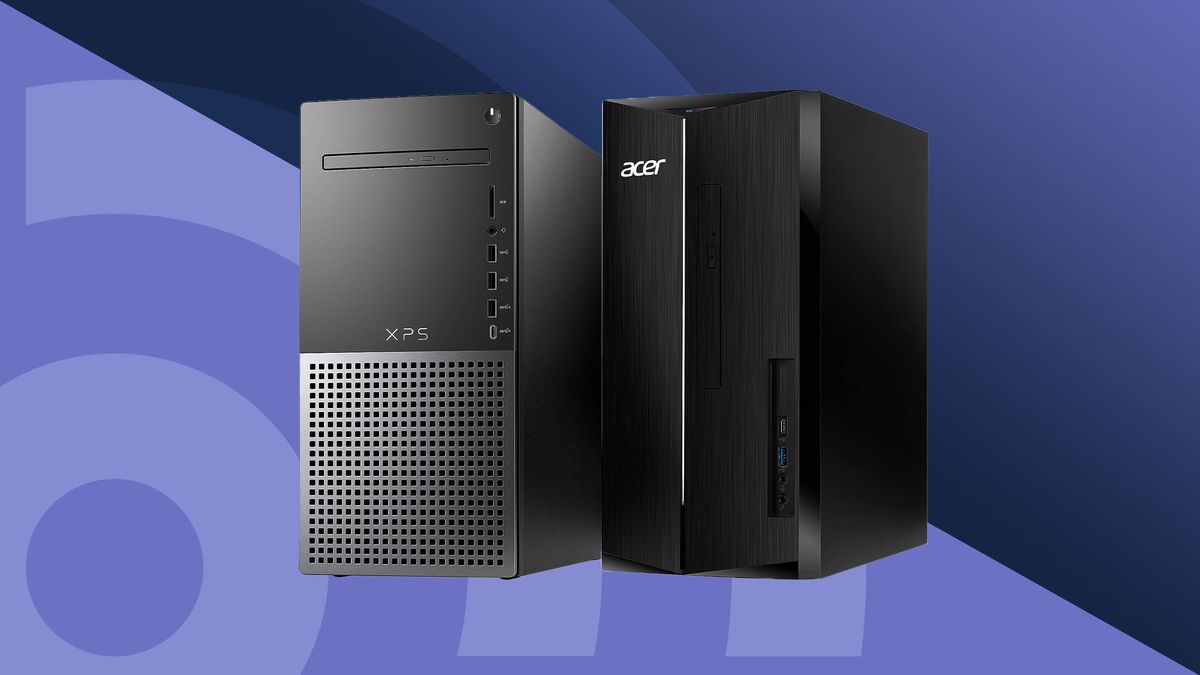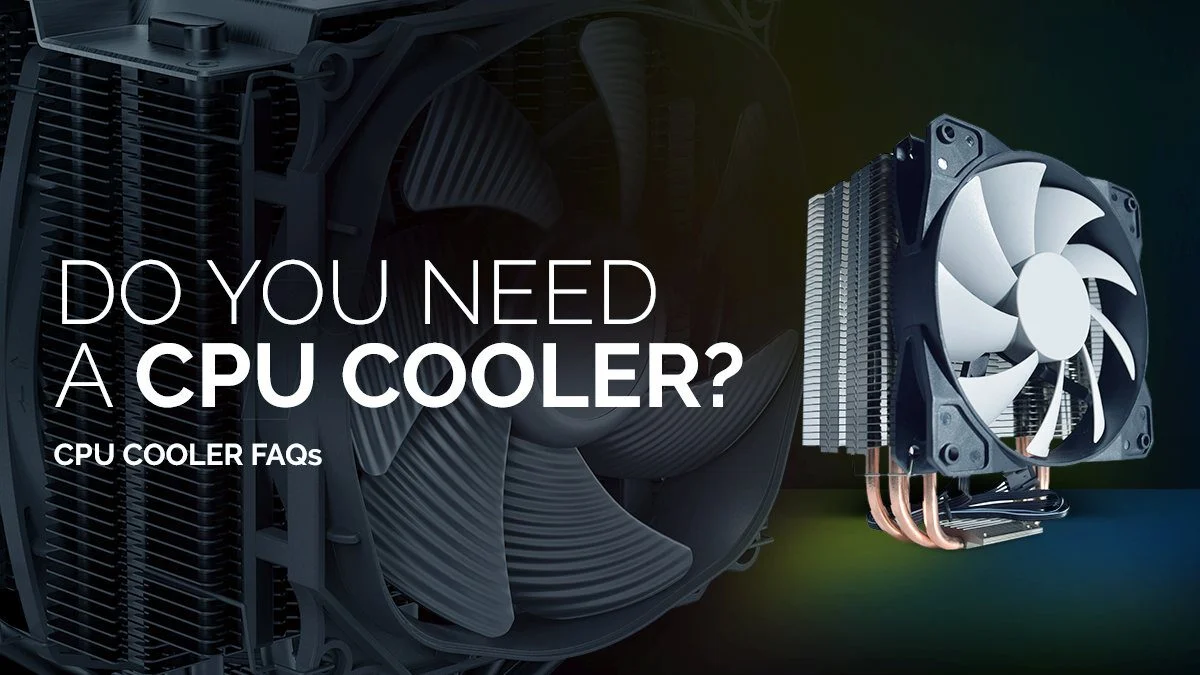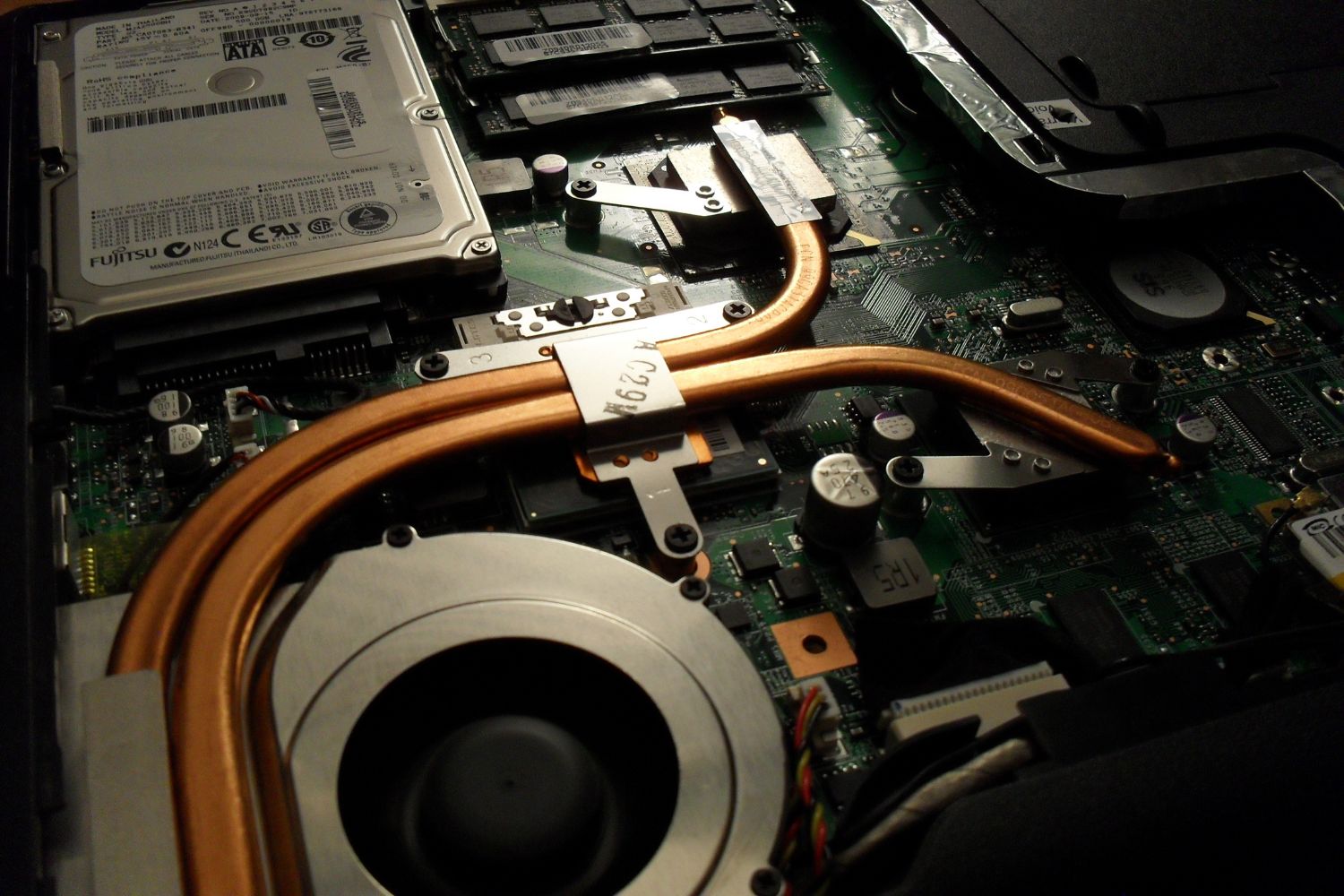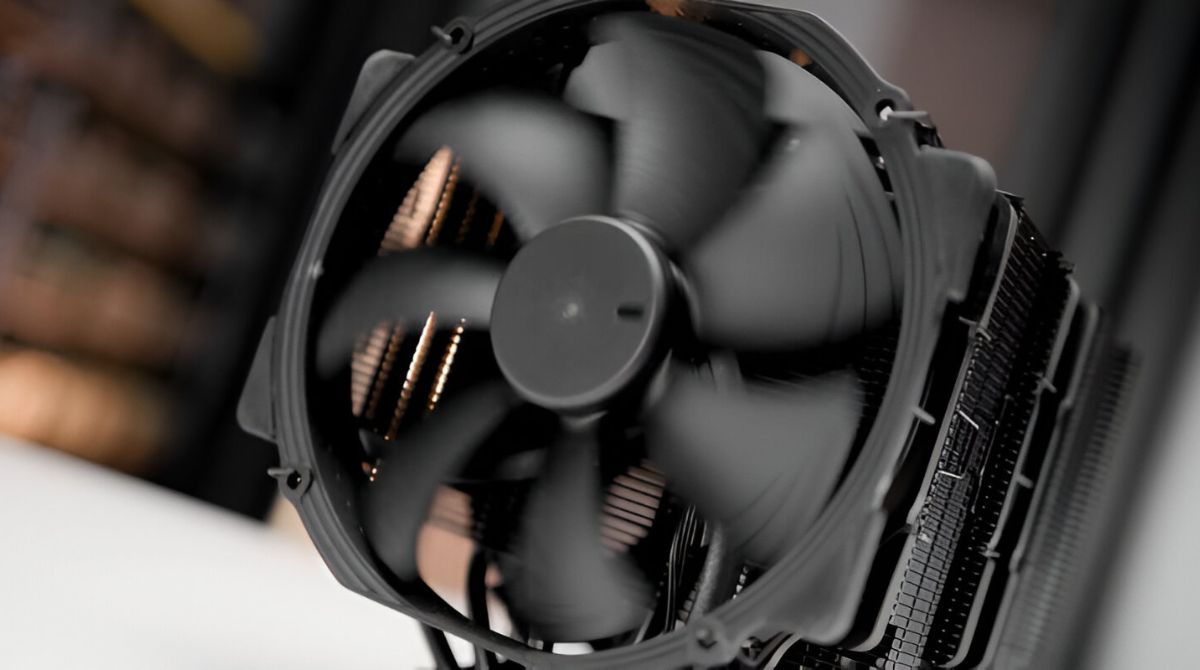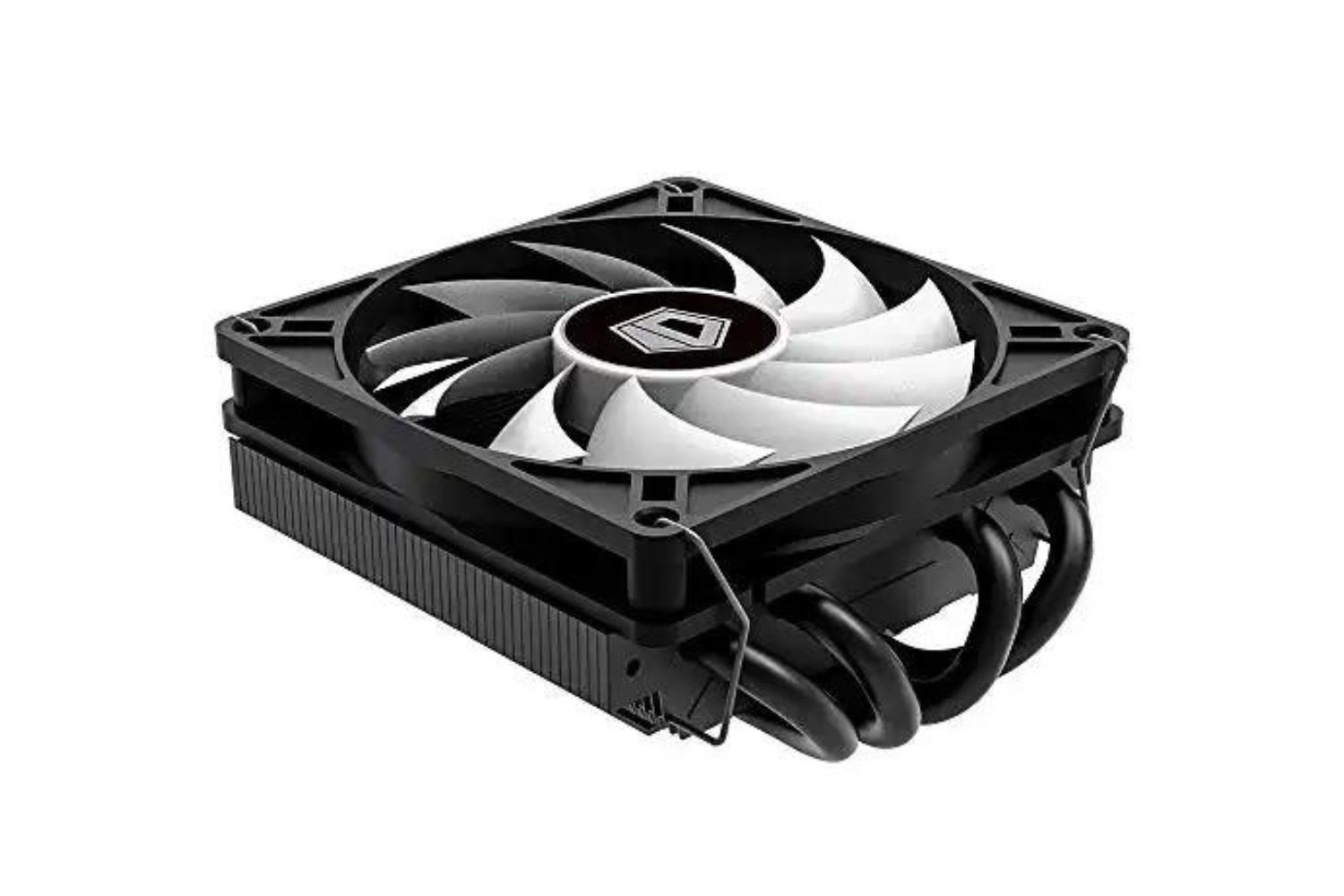Introduction
Welcome to the world of CPU cooling, where an array of options awaits you to keep your processor running smoothly. Among the many choices available, one intriguing alternative stands out: the fanless passive CPU cooler. This innovative cooling solution offers a unique approach to keeping your CPU cool, without the need for an active fan.
In this article, we will explore the concept of fanless passive CPU coolers, how they work, their advantages and disadvantages, and factors to consider when choosing one. Whether you’re a tech enthusiast looking to push the limits of your computer’s performance or a silent computing aficionado seeking a noiseless solution, understanding the capabilities and limitations of fanless passive CPU coolers will help you make an informed decision.
Traditional CPU coolers typically rely on a combination of heat sinks and fans to dissipate heat generated by the processor. These fans work tirelessly to maintain optimal temperatures, but they can often generate unwanted noise, particularly under heavy workloads. This is where fanless passive CPU coolers come into play, offering a silent cooling solution without the humming noise of fans.
By eliminating the need for a fan, fanless passive CPU coolers operate through passive cooling methods. Instead of relying on forced airflow, these coolers rely solely on heat conduction and convection to transfer the heat away from the CPU and dissipate it into the surrounding environment. This approach not only eliminates noise but also reduces the overall power consumption of the system.
Although fanless passive CPU coolers may not be suitable for all scenarios, they excel in specific use cases. For instance, they are ideal for small form factor builds, where space is limited, as they do not require extra clearance for fans. They also find great utility in applications where silent operation is crucial, such as home theater PCs, recording studios, or office environments where noise levels need to be minimized.
So, if you’re curious to delve deeper into the realm of fanless passive CPU coolers, join us as we explore their inner workings, pros and cons, and help you determine if they are the right cooling solution for your needs.
What Is a Fanless Passive CPU Cooler?
A fanless passive CPU cooler is a cooling solution designed specifically for processors that does not require an active fan to dissipate heat. Instead, it relies on passive cooling methods to effectively cool down the CPU.
Traditional CPU coolers, which typically consist of a combination of heat sinks and fans, work by actively drawing away heat from the processor and dissipating it through the movement of air. In contrast, fanless passive CPU coolers operate solely through passive cooling mechanisms, such as heat conduction and convection, to transfer and distribute heat without the need for forced airflow.
At the core of a fanless passive CPU cooler is a heat sink, which is usually made of copper or aluminum and is designed to efficiently absorb and transfer heat away from the CPU. The heat sink incorporates a series of fins or ridges that provide a larger surface area for effective heat dissipation. These fins are typically finned to enhance heat transfer, and some coolers even incorporate heat pipes to further improve their cooling performance.
When the CPU generates heat during operation, it is transferred to the base of the fanless passive CPU cooler through direct contact or heat pipes. From there, the heat is conducted through the heat sink and distributed across the fins. Through the process of convection, the heat is then dissipated into the surrounding air, effectively cooling down the CPU.
One important thing to note is that fanless passive CPU coolers are designed to provide efficient cooling within a certain thermal range. In other words, they excel in lower power and heat scenarios, making them ideal for CPUs with lower TDP (thermal design power) ratings or for systems that are not subjected to intensive tasks or overclocking.
Overall, fanless passive CPU coolers offer a silent and energy-efficient cooling solution for systems that prioritize noise reduction and power savings. While they may not be suitable for high-performance gaming rigs or workstations that demand heavy processing power, they are well-suited for applications where silent operation and compact form factors are key considerations, such as media centers, small office setups, or everyday computing devices.
How Does a Fanless Passive CPU Cooler Work?
A fanless passive CPU cooler operates on the principles of passive cooling, utilizing heat conduction and convection to dissipate heat from the CPU without the need for an active fan. Understanding how this cooling method works will shed light on the effectiveness and limitations of fanless passive CPU coolers.
When the CPU generates heat during operation, it is transferred to the base of the cooler through direct contact or heat pipes. The base of the cooler is usually made of a thermally conductive material, such as copper or aluminum, which efficiently absorbs and conducts heat away from the CPU.
Once the heat is transferred to the base of the cooler, it is then conducted through the heat sink. The heat sink is a structure composed of numerous fins or ridges that provide a larger surface area to enhance heat dissipation. These fins are specially designed to maximize the contact between the heatsink and the surrounding air.
As the heat is conducted through the heat sink, it is naturally dissipating into the surrounding air through a process called convection. Convection occurs when the air molecules near the heat sink come into contact with the heated fins, causing them to become energized and rise while cooler air descends to take their place. This continuous cycle of rising and descending air creates a natural airflow around the heat sink, facilitating the transfer of heat from the CPU.
It’s important to note that the effectiveness of fanless passive CPU coolers relies heavily on a well-ventilated system case. Adequate airflow within the case is crucial for efficient heat dissipation, as it allows the heated air surrounding the heat sink to be replaced with cool, ambient air, promoting a continuous cooling process.
However, it’s worth mentioning that fanless passive CPU coolers may have limitations in handling higher heat loads. CPUs with high thermal design power (TDP) ratings or those subjected to heavy workloads, such as gaming or intensive computational tasks, may generate excessive heat that cannot be effectively dissipated by the passive cooling system alone.
In such scenarios, additional measures may be required to ensure the CPU remains within safe operating temperatures. This can include optimizing the system’s airflow through case fans, ensuring proper cable management, and selecting a CPU with a lower TDP rating.
In summary, a fanless passive CPU cooler works by relying on passive cooling methods, such as heat conduction and convection, to dissipate heat from the CPU without the need for an active fan. While they offer a noiseless and energy-efficient cooling solution, their effectiveness may be limited in handling higher heat loads, making them more suitable for lower-power systems or applications that prioritize silent operation and compact form factors.
Advantages of Fanless Passive CPU Coolers
Fanless passive CPU coolers offer several advantages that make them an attractive cooling solution for certain applications. Understanding these advantages will help you determine if a fanless passive CPU cooler is the right choice for your needs.
1. Silent Operation: One of the primary advantages of fanless passive CPU coolers is their ability to provide silent operation. Without an active fan, these coolers eliminate the noise typically associated with traditional cooling solutions. This makes them ideal for environments where noise reduction is paramount, such as recording studios, home theaters, or quiet office spaces.
2. Energy Efficiency: Since fanless passive CPU coolers do not require a fan to operate, they consume less power compared to traditional cooling solutions. This can result in energy savings and reduced electricity costs in the long run, making them an environmentally-friendly choice.
3. Increased Reliability: With no moving parts, fanless passive CPU coolers have a longer lifespan and are less prone to mechanical failures. The absence of a fan reduces the risk of fan failures, such as bearing wear or motor malfunctions, which can lead to system overheating. This increased reliability translates to fewer maintenance requirements and a more stable system.
4. Compact Form Factor: Fanless passive CPU coolers are typically smaller and more compact compared to their active cooling counterparts. This makes them an excellent choice for small form factor builds or systems with limited space. Their compact size allows for greater flexibility when it comes to choosing a case or optimizing airflow within a tight enclosure.
5. Dust and Maintenance: Traditional CPU coolers with fans tend to accumulate dust over time, which can hinder their cooling performance and require regular maintenance. Fanless passive CPU coolers, on the other hand, have fewer surfaces that attract dust and are easier to clean, resulting in reduced maintenance requirements and a cleaner system overall.
6. Aesthetics: Fanless passive CPU coolers offer a sleek and minimalist aesthetic, as they do not have the bulky appearance of traditional coolers with fans. This can be particularly appealing for users who value a clean and visually appealing computer system.
While fanless passive CPU coolers have numerous advantages, it’s important to consider their limitations in handling high-performance tasks or CPUs with high thermal design power (TDP) ratings. Cooling efficiency decreases as the heat load increases, so ensure that a fanless passive CPU cooler is suitable for your specific usage requirements before making a decision.
Disadvantages of Fanless Passive CPU Coolers
While fanless passive CPU coolers offer several advantages, they also have some inherent disadvantages that should be considered before choosing them as a cooling solution.
1. Cooling Efficiency: Fanless passive CPU coolers may struggle to handle high heat loads generated by powerful processors or heavy workloads. Without an active fan to provide forced airflow, the cooling efficiency of these coolers decreases, potentially leading to higher CPU temperatures. This makes them less suitable for demanding tasks like gaming or overclocking where effective heat dissipation is crucial.
2. Limited Performance for High-TDP CPUs: CPUs with higher thermal design power (TDP) ratings can generate significant heat, requiring a cooling solution capable of efficiently dissipating that heat. Fanless passive CPU coolers may struggle to keep such high-TDP CPUs within safe operating temperatures, potentially resulting in thermal throttling or decreased performance. It is important to consider the TDP rating of your CPU when choosing a cooling solution.
3. System Case Ventilation: Fanless passive CPU coolers rely on proper case ventilation for effective heat dissipation. Inadequate airflow within the system case can hinder the cooler’s cooling performance, as the heated air surrounding the cooler needs to be replaced with cooler ambient air. It is crucial to ensure proper case ventilation by utilizing case fans or ensuring an open and well-ventilated system case.
4. Space Limitations: While fanless passive CPU coolers are compact and space-efficient, they have limited cooling capacity compared to larger, active cooling solutions. This means that in systems with higher heat generation or restricted airflow, the smaller surface area of these coolers may not be sufficient to effectively dissipate heat, resulting in higher CPU temperatures.
5. Cost: Fanless passive CPU coolers can often be more expensive than traditional active cooling solutions due to their specialized design and materials. The added cost is a trade-off for their silent operation, energy efficiency, and overall reliability. It is important to consider your budget and cooling requirements before investing in a fanless passive CPU cooler.
6. Compatibility: Due to their compact size and unique design, fanless passive CPU coolers may not be compatible with all system configurations. It is crucial to ensure proper clearance and compatibility with your specific motherboard, case, and CPU socket before purchasing a fanless passive CPU cooler.
While fanless passive CPU coolers have their limitations, they excel in specific use cases where noise reduction and energy efficiency are paramount. It is important to carefully evaluate your cooling needs and the specifications of your system before deciding on a fanless passive CPU cooler as your cooling solution.
Factors to Consider When Choosing a Fanless Passive CPU Cooler
Choosing the right fanless passive CPU cooler involves considering several important factors. These factors will help determine if a particular cooler is compatible with your system, meets your cooling requirements, and ensures optimal performance. Here are some key factors to consider:
1. CPU Socket Compatibility: Ensure that the fanless passive CPU cooler you choose is compatible with your CPU socket. Different CPU sockets have varying dimensions and mounting mechanisms, so ensure that the cooler is designed to fit your specific socket type.
2. TDP Rating: Consider the thermal design power (TDP) rating of your CPU. Fanless passive CPU coolers have limitations in handling higher TDP CPUs, so it is crucial to choose a cooler that can effectively dissipate the heat generated by your processor. Check the TDP specifications of the cooler to ensure it matches or exceeds the TDP of your CPU.
3. Cooling Performance: Evaluate the cooling performance of the fanless passive CPU cooler. Look for coolers with larger surface areas, high-quality heat sinks, and advanced heat pipe technology to ensure efficient heat dissipation. Reviews and benchmarks can provide insight into the cooling performance of specific cooler models.
4. Form Factor and Clearance: Consider the form factor of your system case and the clearance available for the fanless passive CPU cooler. These coolers are generally compact, making them suitable for small form factor builds or systems with limited space. Ensure that the cooler is compatible with your case and that there is sufficient clearance for installation.
5. System Airflow: Assess the airflow capabilities of your system. Fanless passive CPU coolers rely on proper airflow within the case to effectively dissipate heat. Make sure your system has sufficient ventilation, including case fans or open-air designs, to facilitate optimal cooling performance.
6. Noise Considerations: While fanless passive CPU coolers provide silent operation, it is important to evaluate other noise sources in your system. Some components, such as graphics cards or power supplies, may emit noise that can impact overall system noise levels. Consider the noise levels of other components to achieve the desired level of silence.
7. Price and Budget: Consider your budget when choosing a fanless passive CPU cooler. These coolers can be slightly pricier than traditional cooling solutions due to their specialized design. However, factor in the long-term energy savings and reliability benefits when evaluating their cost-effectiveness.
8. Reviews and Recommendations: Research reviews and recommendations from other users or tech enthusiasts. Look for feedback on specific models and brands to gain insights into their performance, reliability, and overall user satisfaction.
9. Future Upgradability: Consider the future upgradability of your system. If you plan to upgrade your CPU or other components in the future, ensure that the fanless passive CPU cooler you choose can accommodate more powerful or higher heat-generation components.
By considering these factors, you can make an informed decision when choosing a fanless passive CPU cooler that meets your requirements and ensures optimal cooling performance for your system.
Is a Fanless Passive CPU Cooler Right for You?
Determining whether a fanless passive CPU cooler is the right choice for you depends on several factors and considerations. Evaluate the following aspects to determine if a fanless passive CPU cooler aligns with your needs and requirements:
1. Noise Reduction: If you prioritize a silent computing experience, particularly in environments where noise levels need to be minimized, a fanless passive CPU cooler is an excellent choice. By eliminating the noise generated by fans, these coolers provide a near-silent operation, making them ideal for media centers, recording studios, or quiet office spaces.
2. Energy Efficiency: If energy efficiency and power savings are important to you, a fanless passive CPU cooler can help reduce power consumption. Without an active fan, they consume less power compared to traditional cooling solutions, resulting in lower electricity bills and a more environmentally-friendly system.
3. Compact Form Factor: If you have a small form factor build or limited space in your system case, a fanless passive CPU cooler offers a space-efficient solution. They are generally more compact compared to their active cooling counterparts, allowing for greater flexibility in choosing a case or optimizing airflow within a tight enclosure.
4. Lower Heat Loads: If you have a low-power system or a CPU with a lower thermal design power (TDP) rating, a fanless passive CPU cooler can effectively handle the heat generated by these components. They work well in scenarios where the heat production is moderate and does not require aggressive cooling methods.
5. Cooling Requirements: Assess your cooling requirements and the demands of your system. If you engage in heavy gaming, overclocking, or tasks that generate high heat loads, a fanless passive CPU cooler may struggle to maintain optimal temperatures. In such cases, active cooling solutions with fans and higher cooling capacity might be more suitable.
6. Budget: Take into account your budget and the cost of a fanless passive CPU cooler. While these coolers can be slightly more expensive than traditional cooling solutions, they offer benefits such as silent operation, energy efficiency, and increased reliability. Consider the long-term savings and advantages when evaluating their cost-effectiveness.
7. System Compatibility: Ensure that the fanless passive CPU cooler is compatible with your system. Consider factors such as CPU socket compatibility, clearance in your case, and the overall airflow configuration of your system. Proper compatibility is essential to ensure optimal performance and fit.
Ultimately, the decision of whether a fanless passive CPU cooler is right for you depends on your specific needs and priorities. If silence, energy efficiency, and space-saving are crucial, and you have a lower heat load system, a fanless passive CPU cooler can deliver the benefits you seek. However, if you have high-performance requirements, heavy workloads, or overclocking needs, an active cooling solution might be a more suitable choice.
Conclusion
Fanless passive CPU coolers offer a unique and compelling cooling solution for those seeking silent operation, energy efficiency, and a compact form factor. By relying on passive cooling methods like heat conduction and convection, these coolers provide efficient heat dissipation without the need for an active fan. However, it is essential to weigh the advantages and disadvantages, as well as consider specific factors when determining if a fanless passive CPU cooler is right for you.
If noise reduction is a top priority, whether for a home theater setup, a recording studio, or a quiet office environment, a fanless passive CPU cooler can deliver the desired silent operation. The absence of a fan eliminates the noise typically associated with traditional cooling solutions, providing a more peaceful computing experience.
Energy efficiency is another significant advantage of fanless passive CPU coolers. With lower power consumption compared to active cooling solutions, these coolers can contribute to reduced energy usage and lower electricity bills. They are especially well-suited for systems with lower power CPUs or usage scenarios that prioritize power savings.
Compact form factor builds or systems with limited space can benefit from the smaller size of fanless passive CPU coolers. Their compact design allows for more flexibility in choosing a case or optimizing airflow within tight enclosures, making them an excellent choice for small form factor setups.
However, it is important to consider the limitations of fanless passive CPU coolers. They may struggle to handle high heat loads generated by powerful processors or heavy workloads. In scenarios where high-performance tasks, gaming, or overclocking are involved, active cooling solutions with higher cooling capacities might be more suitable.
Consider factors such as CPU socket compatibility, cooling performance, system airflow, and budget when choosing a fanless passive CPU cooler. Assess your specific needs, priorities, and the heat load of your system to determine if a fanless passive CPU cooler aligns with your requirements and can provide optimal cooling performance.
In conclusion, fanless passive CPU coolers offer a compelling alternative for those seeking silent and energy-efficient cooling in compact form factor builds. While they may have their limitations, they excel in specific use cases where noise reduction, energy efficiency, and space-saving are key considerations. By assessing your specific needs and considering the factors discussed, you can make an informed decision and select the right fanless passive CPU cooler for your system.







